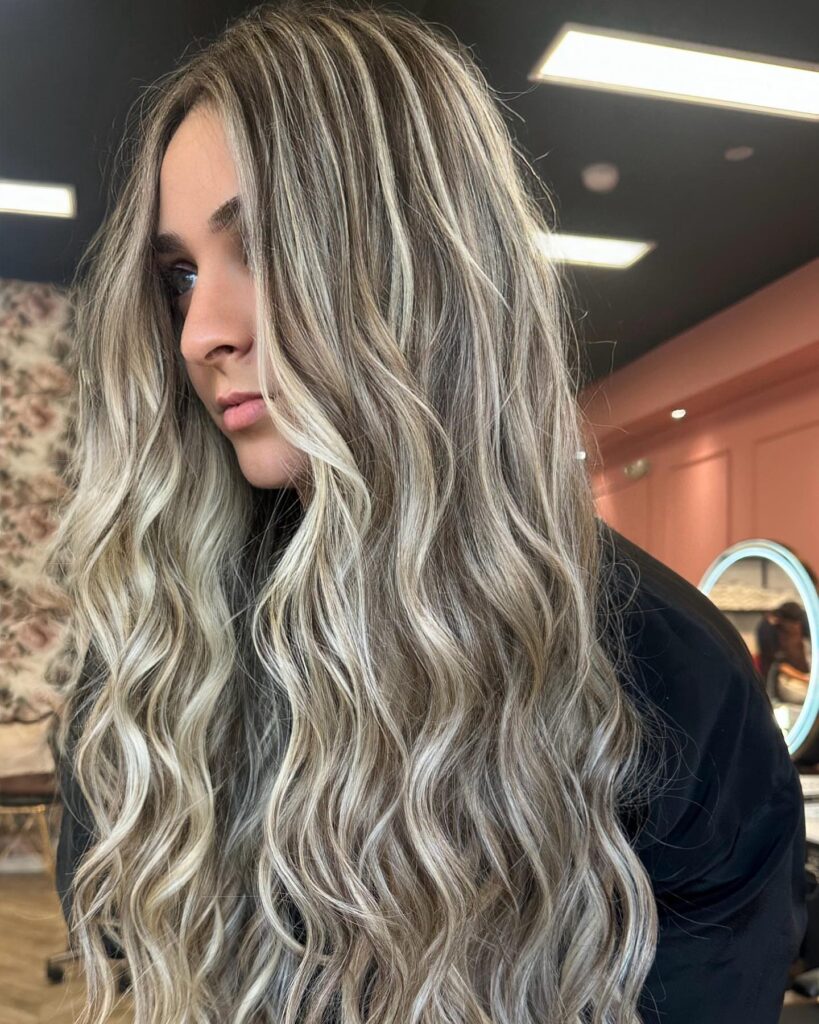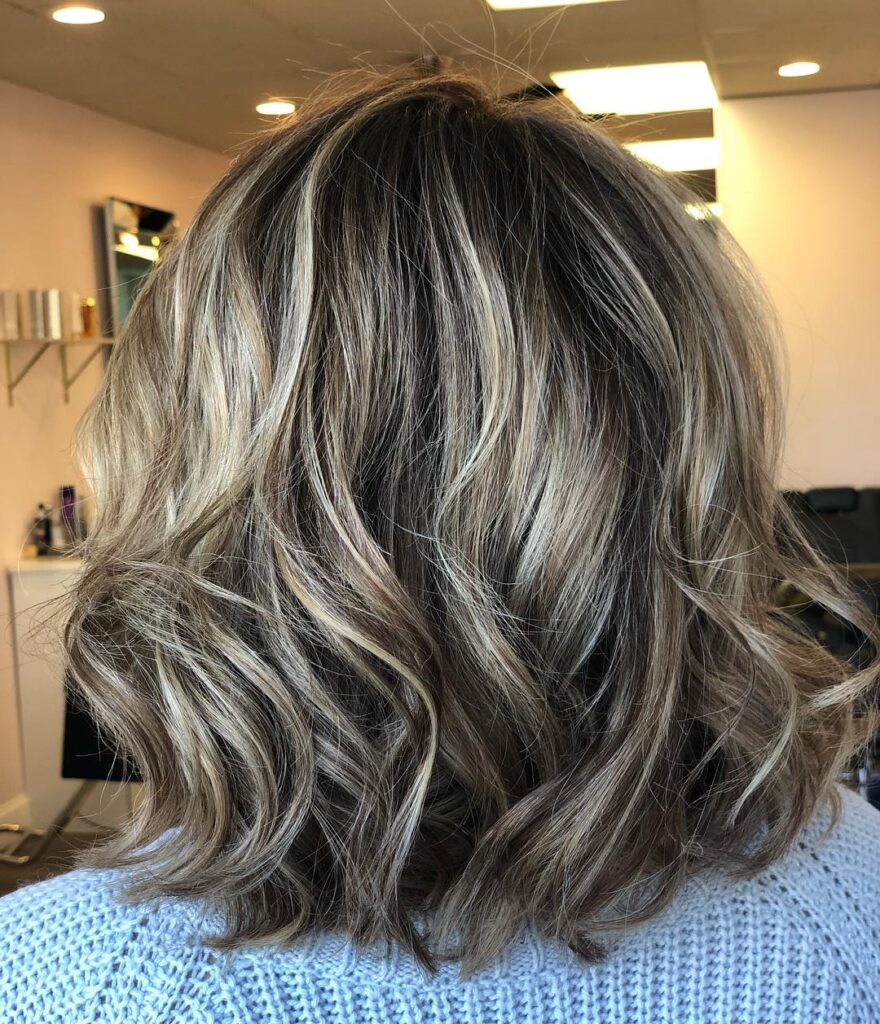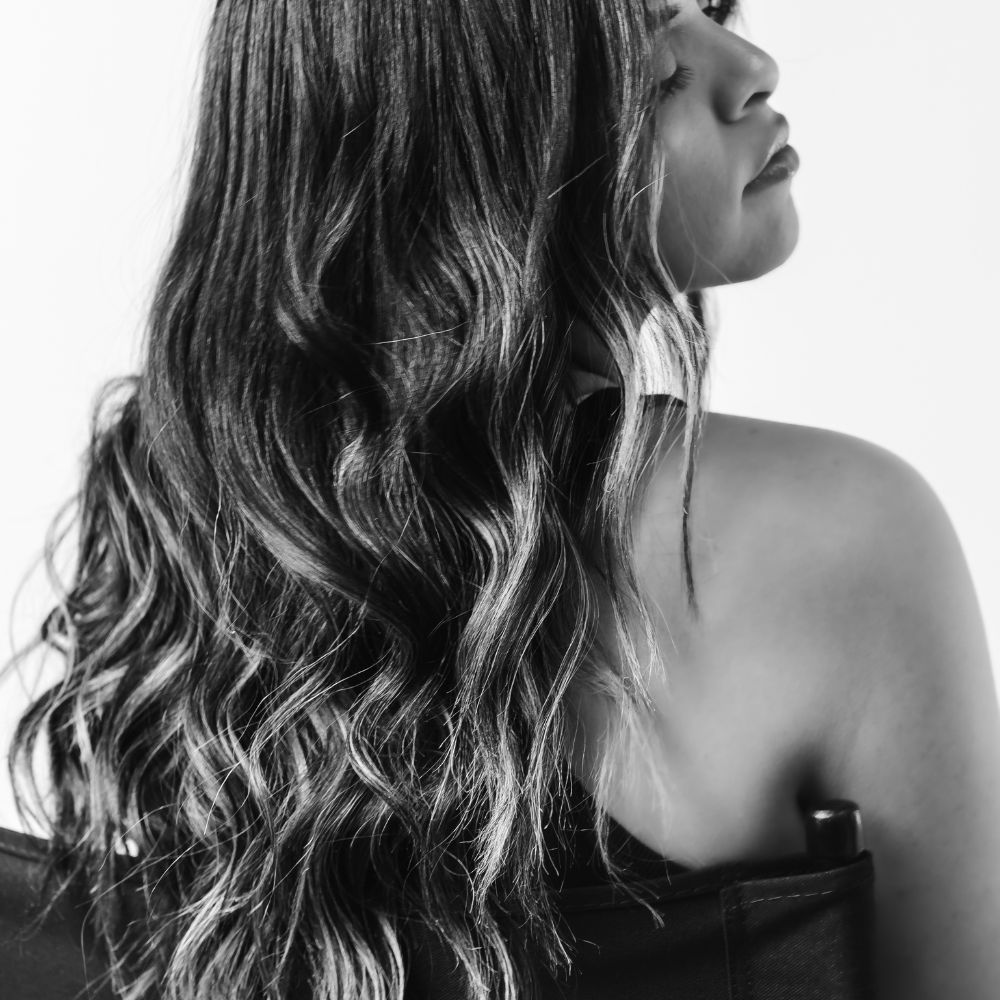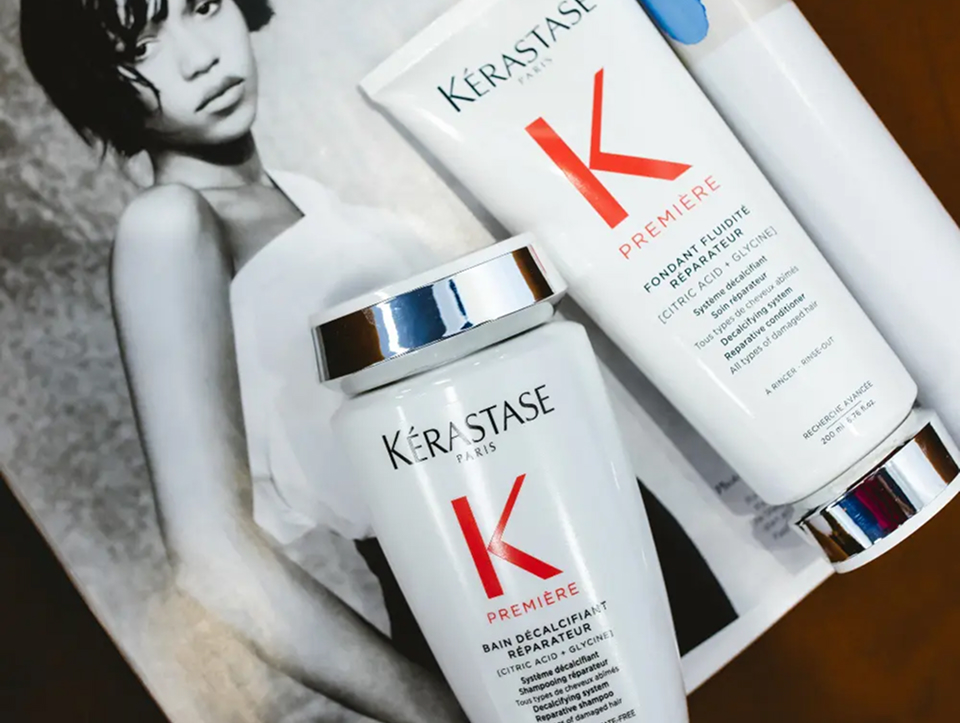Trying to decide between full balayage vs partial balayage? You’re not alone. Whether you’re going for a bold color refresh or a soft, sun-kissed look, understanding the difference between these two popular techniques is key to getting the results you want.
At our Medford, MA, salon just outside Boston, this is one of the most common questions we get. In this guide, you’ll learn the pros, cons, and hair types best suited for each style so you can confidently book your next color appointment.
Plus, we’ll share insider tips to keep your balayage fresh, vibrant, and effortless.
Full Balayage vs Partial Balayage – What Are They?

What Is Full Balayage?
Full balayage is a hair-lightening technique that involves hand-painting highlights throughout the entire head. It creates an all-over sun-kissed glow and provides high-impact dimension.
Pros:
- Maximum brightness and contrast
- Great for complete color transformations
- Long-lasting with fewer touch-ups
Cons:
- More time-intensive
- Slightly higher cost than partial
💡 Tip: For best results, pair your full balayage with a deep-conditioning treatment to maintain shine and prevent dryness.
What Is Partial Balayage?
Partial balayage focuses on specific sections, usually the top layer or front of your hair. It’s a subtler way to add dimension and brightness without a full-color overhaul.
Pros:
- Lower maintenance
- Budget-friendly
- Soft, natural-looking highlights
Cons:
- Less dramatic
- May require more frequent touch-ups if you want consistent brightness
💡 Tip: Partial balayage is ideal for clients with layers or face-framing cuts. See examples of balayage for curly hair to visualize the impact on texture.
How Full and Partial Balayage Are Applied

Understanding how each technique is applied can help you decide which is right for you and set expectations before you walk into the salon.
Full Balayage Application
- Consultation: Your stylist evaluates your hair type, desired tone, and overall goals.
- Sectioning: Hair is divided across the entire head.
- Hand-Painting: Lightener is painted from mid-lengths to ends throughout the whole head for an even, radiant lift.
- Processing Time: You’ll typically sit under heat or foil for 30–60 minutes, depending on your hair’s condition.
- Toning & Rinsing: A toner is applied to neutralize brassiness and perfect the final tone.
💡 Pro Tip: Full balayage requires more foil work and time. Plan for a 2.5–3 hour session.
Partial Balayage Application
- Consultation: Your stylist focuses on the areas you want to brighten (e.g., around the face).
- Sectioning: Only the top layer or front sections are isolated.
- Selective Painting: Lightener is painted on the visible or strategic sections of hair.
- Shorter Processing: Takes 45–90 minutes, since fewer sections are colored.
- Toning & Rinsing: Color is blended and refined with toner to ensure a seamless finish.
💡 Pro Tip: Partial balayage is ideal for those wanting brightness without the full commitment.
Side-by-Side Comparison Table
| Feature | Full Balayage | Partial Balayage |
|---|---|---|
| Coverage | Entire head | Focused sections (top/front) |
| Look | Bold, high-impact dimension | Subtle, natural brightness |
| Maintenance | Lower (lasts longer) | Higher (may need frequent toning) |
| Cost | More expensive | More budget-friendly |
| Best for | Full transformations, dramatic changes | Soft glow, face-framing effects |
| Styling Flexibility | Great for varied hairstyles | Best for layered or curly textures |
How to Choose: Full vs Partial Balayage

Consider the following before making a decision:
- Hair Goals: Want a bold transformation? Go full. Prefer subtle brightness? Try partial.
- Maintenance Commitment: Full balayage lasts longer, but partial is easier to maintain.
- Budget: Full balayage is typically more expensive.
If you’re still unsure, check out our guide to balayage highlights for more inspiration or book a consultation with our expert stylists in Medford, MA.
💡 Tip: Not sure how often to refresh your balayage? A hair toner application can keep your color looking salon-fresh in between appointments.
Enhance Your Results: Pair with These Techniques

- Root smudging: Helps blend harsh lines for a seamless grow-out
- Coloring virgin hair: Learn how untouched hair can affect your balayage results
- Heat protectants: A must to prevent color fading from styling tools
- Full vs Partial Highlights comparison: For more clarity on highlights vs balayage
💡 Tip: Always use a sulfate-free shampoo and book regular deep conditioning treatments to preserve the softness and health of your balayage-treated hair.
Both coloring techniques leave your hair with beautiful results, and choosing the best one depends on these factors:
Balayage Maintenance: What to Know

Balayage fades over time, especially on porous or damaged hair. Here’s how to extend the vibrancy:
- Touch up every 12–16 weeks, depending on your hair growth
- Use a purple shampoo if you notice brassy tones
- Schedule regular trims to avoid split ends interfering with the look
💡 Tip: Consider a balayage hair detox or gloss treatment if your color looks dull.
Choosing the Right Salon in Boston

Whether you’re drawn to a bold full balayage or a subtle partial transformation, choosing a skilled stylist is key. At our Medford, MA hair salon, our balayage specialists customize every service to fit your face shape, lifestyle, and color goals.
💡 Tip: Browse our guide to balayage to better understand the process before committing.
Turn Heads with Radiant Color
Both coloring techniques offer low-maintenance upkeep and a natural appearance with reduced hair damage.
While there are differences in costs and salon visits, the services provided are the same. The main decision when deciding between a full or partial balayage is whether you want to make a dramatic or subtle change.
Whichever one you choose, we recommend visiting a professional colorist to help tailor the technique to suit your face shape, hair, and desired look.
Book your balayage appointment today at our Medford, MA, salon and discover a color that turns heads for all the right reasons.
FAQ
How long does a full balayage vs a partial balayage take?
Full balayage can take 3–5 hours, depending on your hair length and texture. Partial balayage is quicker, usually around 1.5–3 hours.
Is full balayage more damaging than partial balayage?
Not necessarily. Damage depends more on the lightning process and aftercare than the amount of hair treated. Always use a heat protectant and deep conditioning regularly to keep your strands healthy.
Which lasts longer, partial or full balayage?
Full balayage tends to last longer because it blends more thoroughly into your hair, but both can last 12–16 weeks with proper maintenance.
Can I switch from partial to full balayage later?
Many clients start with a partial balayage to try it out, then go full for a bolder look. A skilled stylist can guide your color journey step-by-step.
What’s better for first-timers, full or partial balayage?
If you’re new to balayage, partial is a great way to ease in and see how you like the look. From there, you can explore full balayage for more impact.









